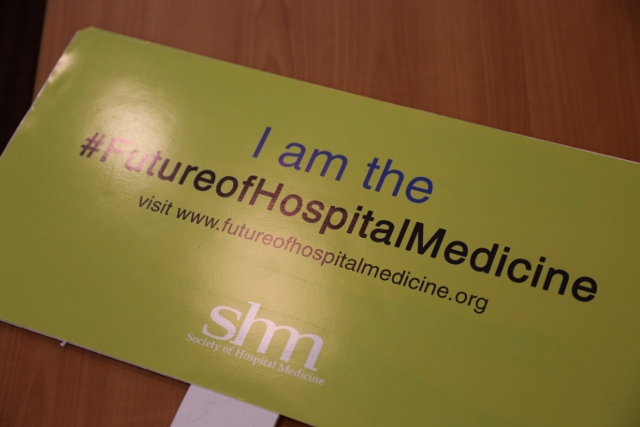by: Monica Shah
Have you ever encountered a patient whose attitude towards recovery is inspirational? Someone whose appreciation makes the other tough cases bearable? As a medical student doing research on sleep and functional recovery during and after hospitalization at the University of Chicago Hospital, I’ve encountered a few of those patients. These are the patients who really understand that the research we are conducting is designed to help improve their hospital stay and give them a chance to voice their complaints about what conditions are bothering them and potentially negatively impacting their recovery. However, to meet such patients, it took some work on my end.
We all know that trying to enroll patients for any study is difficult. When I am on patient floors, I realize the complexities of consenting patients. Usually, I have a narrow window to discuss our study while simultaneously trying to use a convincing tone to gauge interest. But once that window starts to close and a patient’s opinion is made up, it feels almost impossible to try to recover my stand if I have failed to convey the study’s importance and the benefits to the patient. However, what I started noticing was that the minute I said the word “survey” or “questionnaire”, patients seemed to quickly lose interest. As soon as “survey” came out of my mouth, the answers I would get were:
“Maybe tomorrow…”
“Uh, I’m tired.”
Or straight up, “No leave me alone.”
So how do I overcome this “instant refusal”? How do I wordsmith my request in order to convince patients to be part of the study? I decided to start with how I could help them. I now start my discussions with “ I am here to help you and other patients improve sleep.” Or, “I want to make sure you and other patients are sleeping well.” It was amazing how many more patient consents I obtained for the study.
This helped me realize how important effective communication is; my messaging, needs to be specific to each patient. The changes I made in how I messaged our study to patients really has increased positive response rates. As simple as effective and emphatic communication from patient to provider might seem, it is still a significant problem, which became evident when I talked to patients. One patient I spoke with during my study said he hated how doctors talk “down” to him, as if he is an inferior. Another patient complained that his doctor barely talked to him at all.
Now, I understand the issue of physicians balancing their limited time with the large number of patients they are expected to see. But this isn’t necessarily about spending more time with patients; it is the quality of time doctors spend with their patients. Patients value when their providers take a few minutes to get to know different religious viewpoints, and mental, and physical stresses affecting them. Physicians need to account for these stresses when developing treatment plans not only to maximize results to improve overall health of patients, but also to build a stronger doctor-patient relationship. This trust is the foundation of healthcare, and it’s important not to forget that in the stack of patient files. Going the extra mile by spending some time understanding the concerns of patients and showing true interest in their life stories can really go a long way and make healthcare professionals more compassionate and could contribute to improved patient outcomes.
However, how do future physicians develop the skills to utilize patient appointment time efficiently while maintaining compassion? Like with other difficult tasks, practice is the key. Courses on communication and role-plays with standardized patients early on in medical school training could be a good start in developing strong patient interaction skills, or improve, as they say, “bedside manner”. This early start will help medical students be more sensitive towards patient needs and aware of their demeanor when speaking with patients and their families. The idea is that by putting continuous work into building communication skills throughout medical training, once students are in practice, these skills come naturally and automatically. Additionally, future interventions for medical practitioners striving to improve quality of care can help improve both patient satisfaction and providers’ job satisfaction knowing that they are providing the best care possible, starting with a strong provider-patient relationship.
 Monica Shah is a second year medical student at Wayne State University School of Medicine in Detroit, Michigan. She received her B.S from the University of Michigan in 2014, with a major in Neuroscience. She has been very active in the research community for the past 5 years, assisting in projects in the fields of child behavioral pediatrics, gastroenterology, and psychiatry. Currently, she is one of the three medical students who received the SHM Student Hospitalist Scholar Grant with which she is conducting research related to quality of care for patients.
Monica Shah is a second year medical student at Wayne State University School of Medicine in Detroit, Michigan. She received her B.S from the University of Michigan in 2014, with a major in Neuroscience. She has been very active in the research community for the past 5 years, assisting in projects in the fields of child behavioral pediatrics, gastroenterology, and psychiatry. Currently, she is one of the three medical students who received the SHM Student Hospitalist Scholar Grant with which she is conducting research related to quality of care for patients.



Leave A Comment